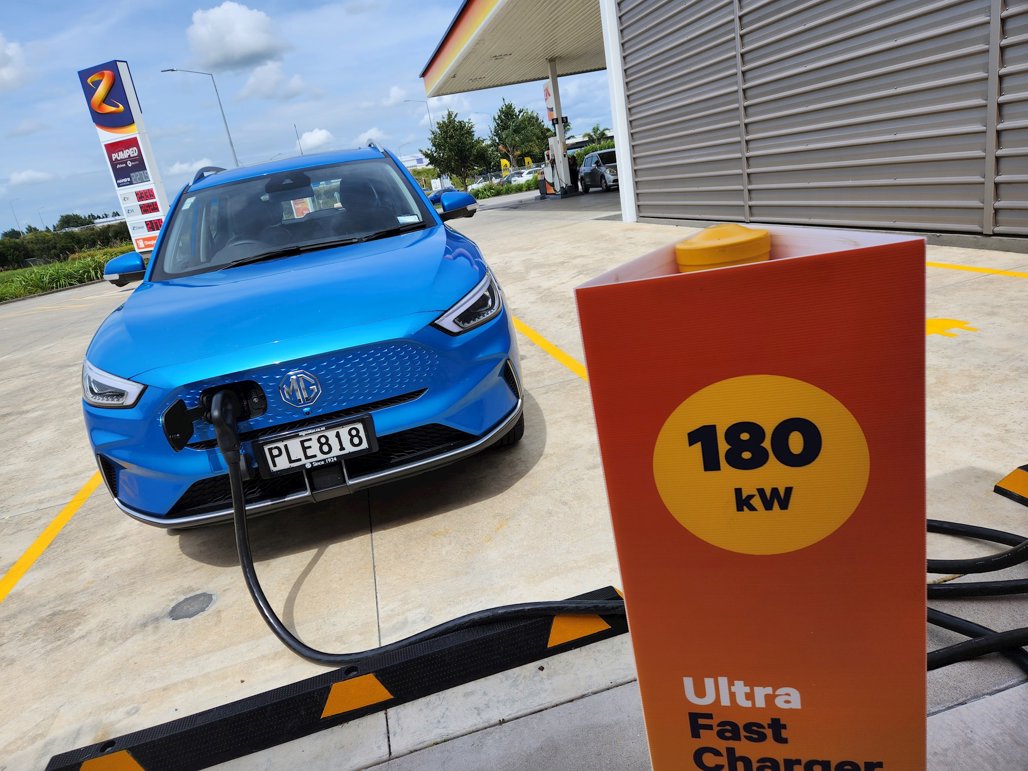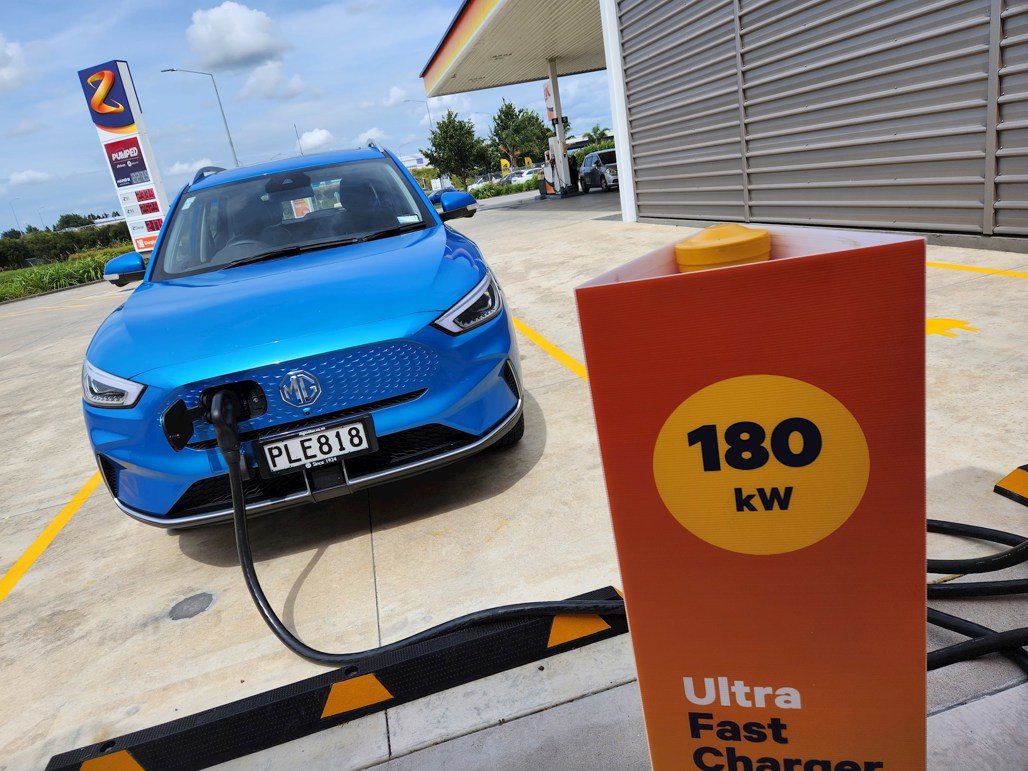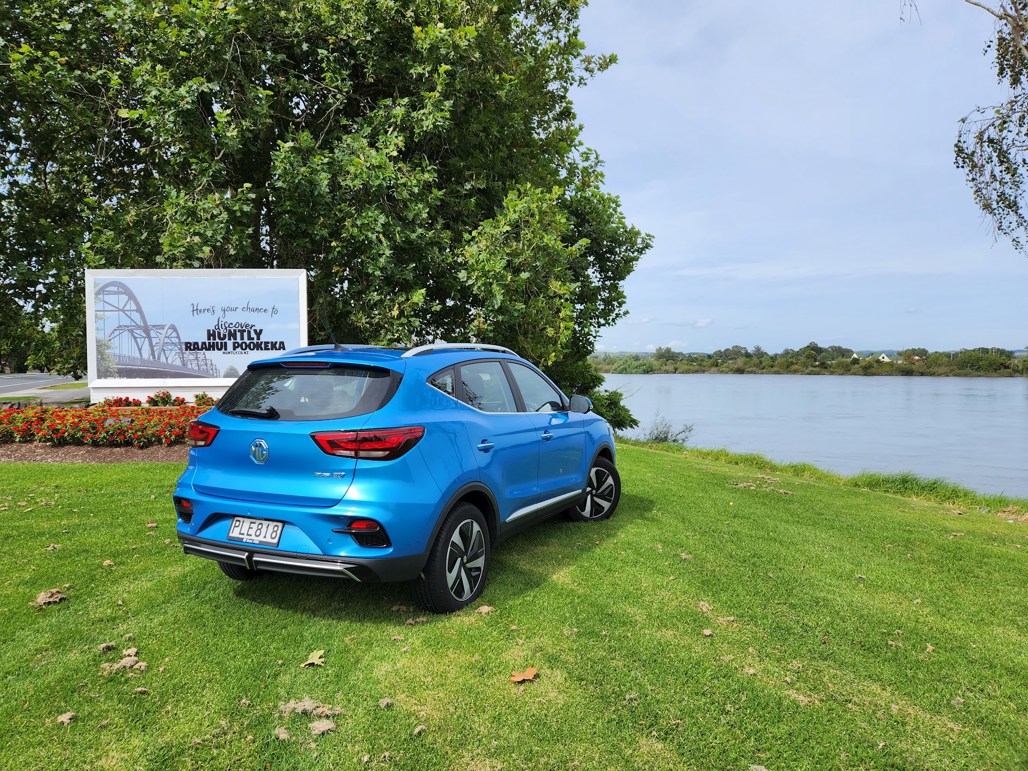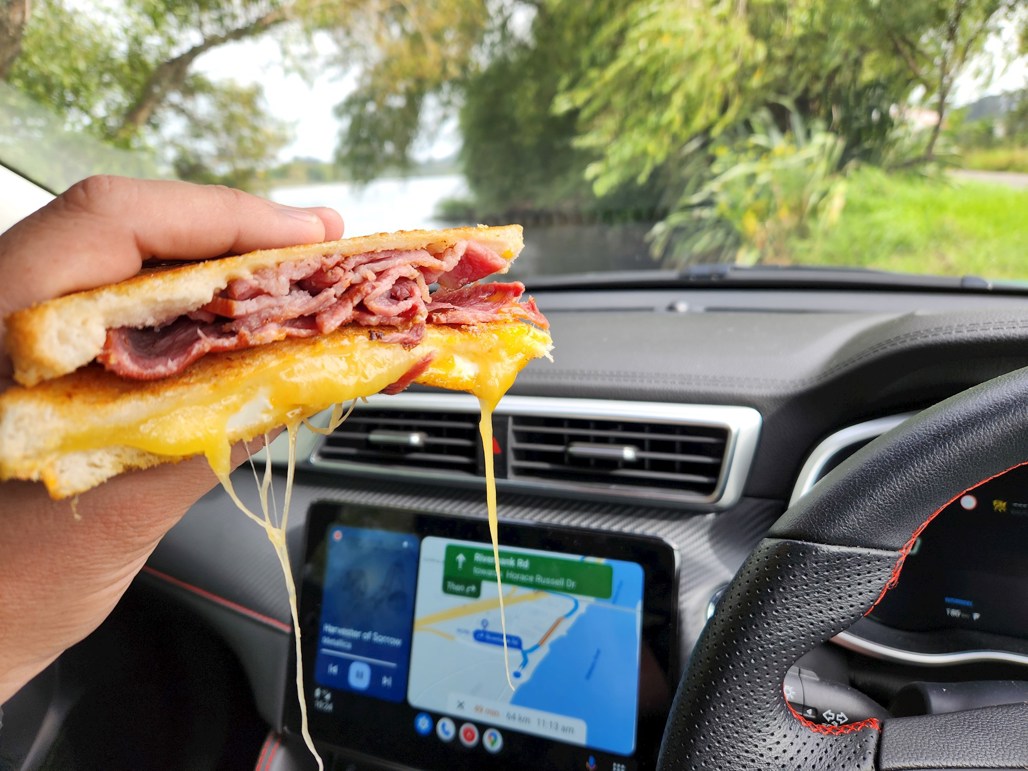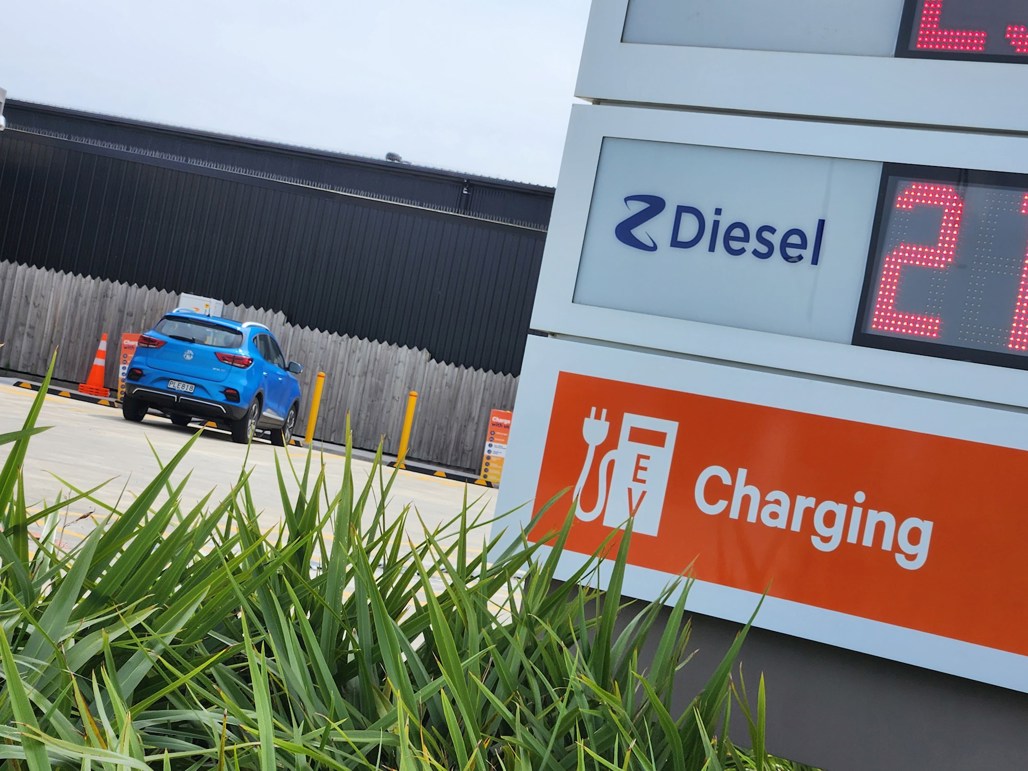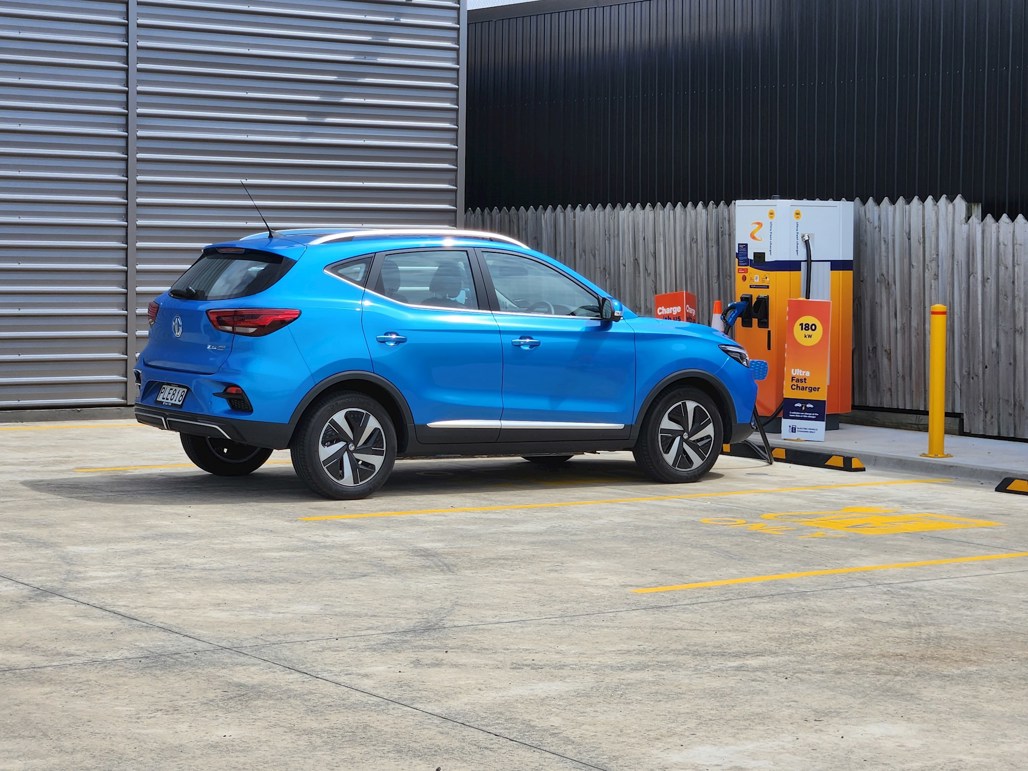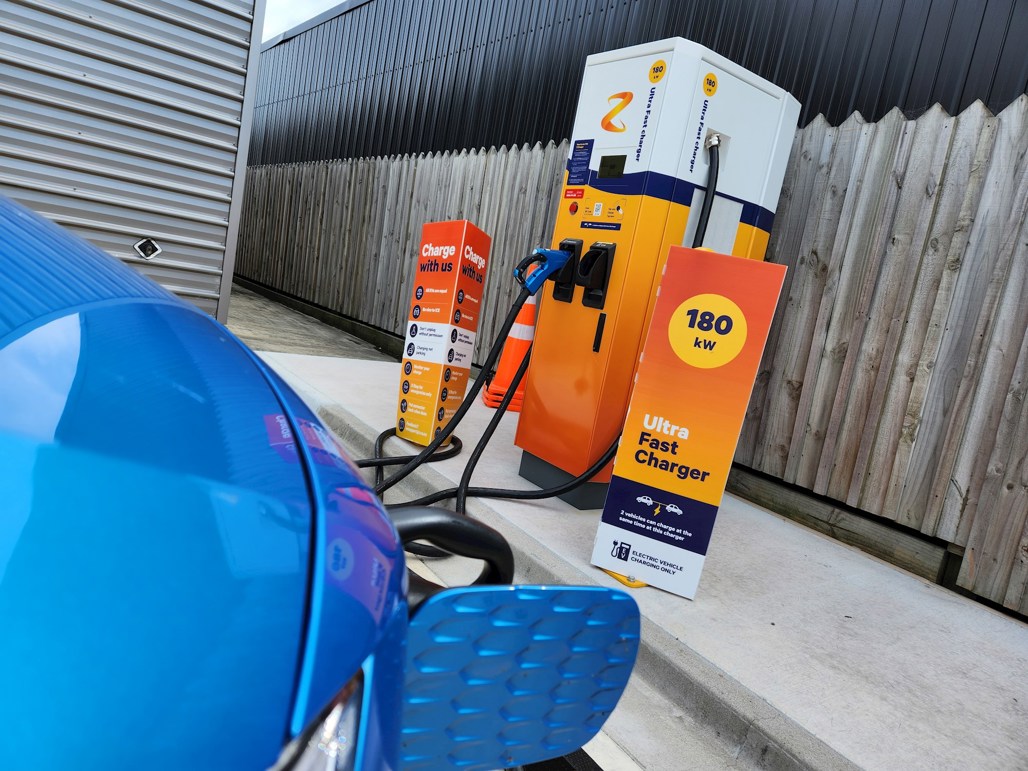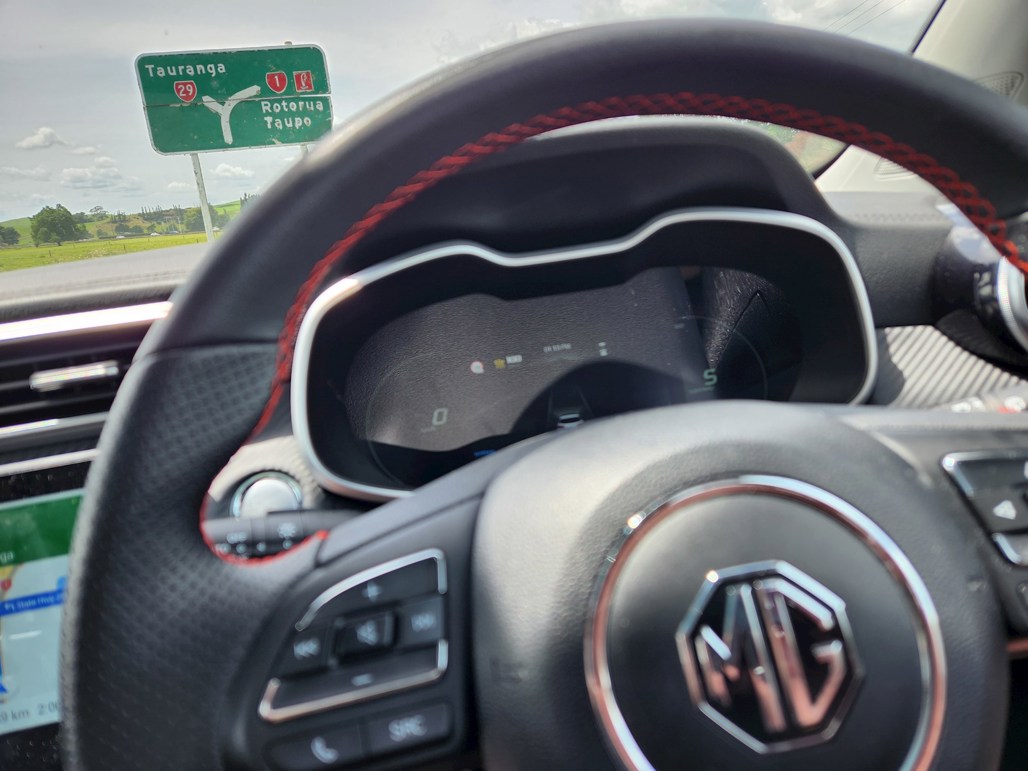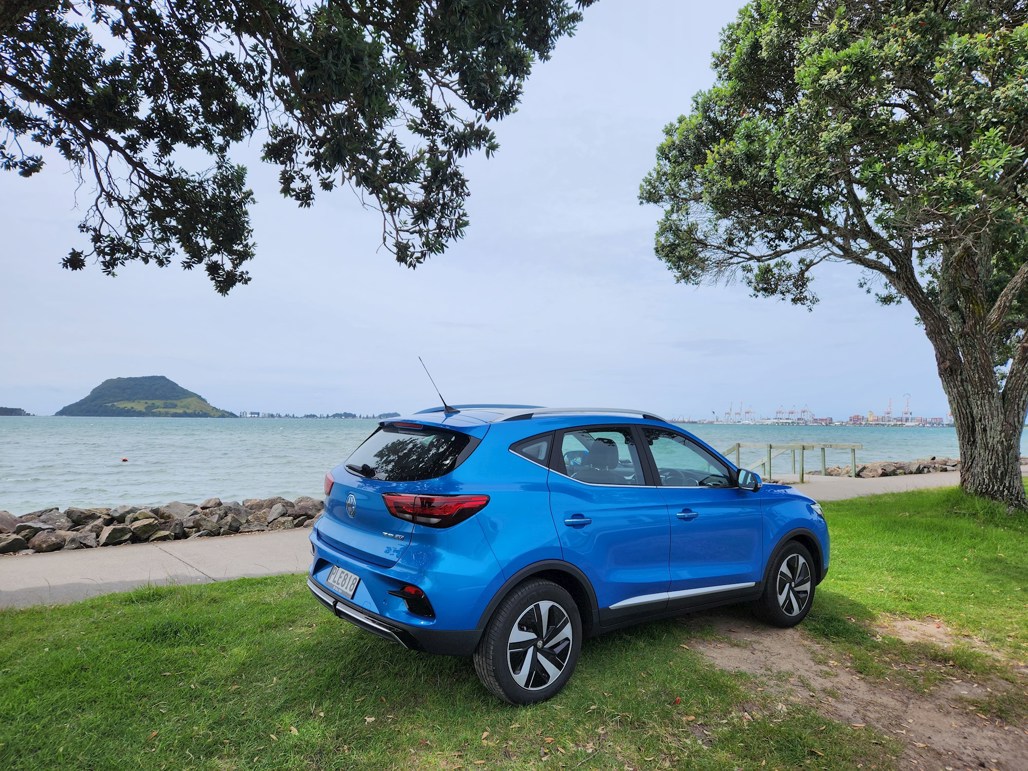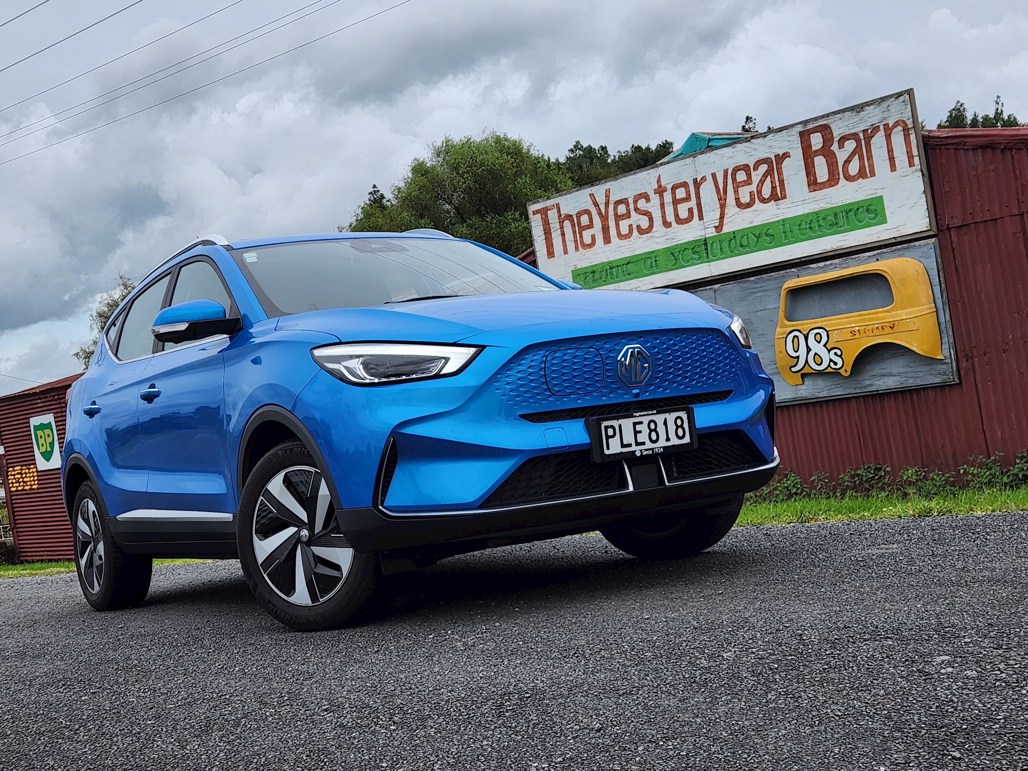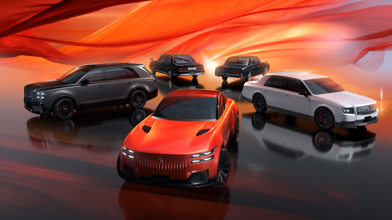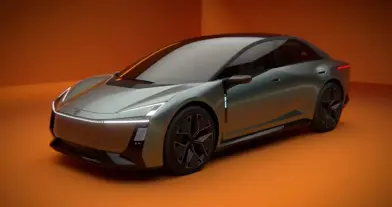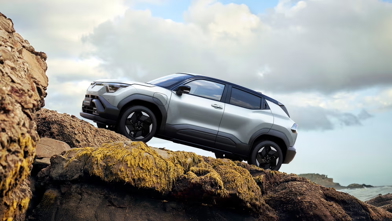Attitudes towards electric vehicles are rapidly changing in New Zealand and, while the people who are staunchly anti-EV will likely never change their minds, our ever-increasing charging network and the steady proliferation of new EVs with larger ranges makes the good old Kiwi summer road trip a far easier thing to do on electric power.
Or is it? And do they? While there are plenty of BEVs these days that have 400km-plus ranges, how do the more cost-friendly city- focused ones with smaller ranges get on?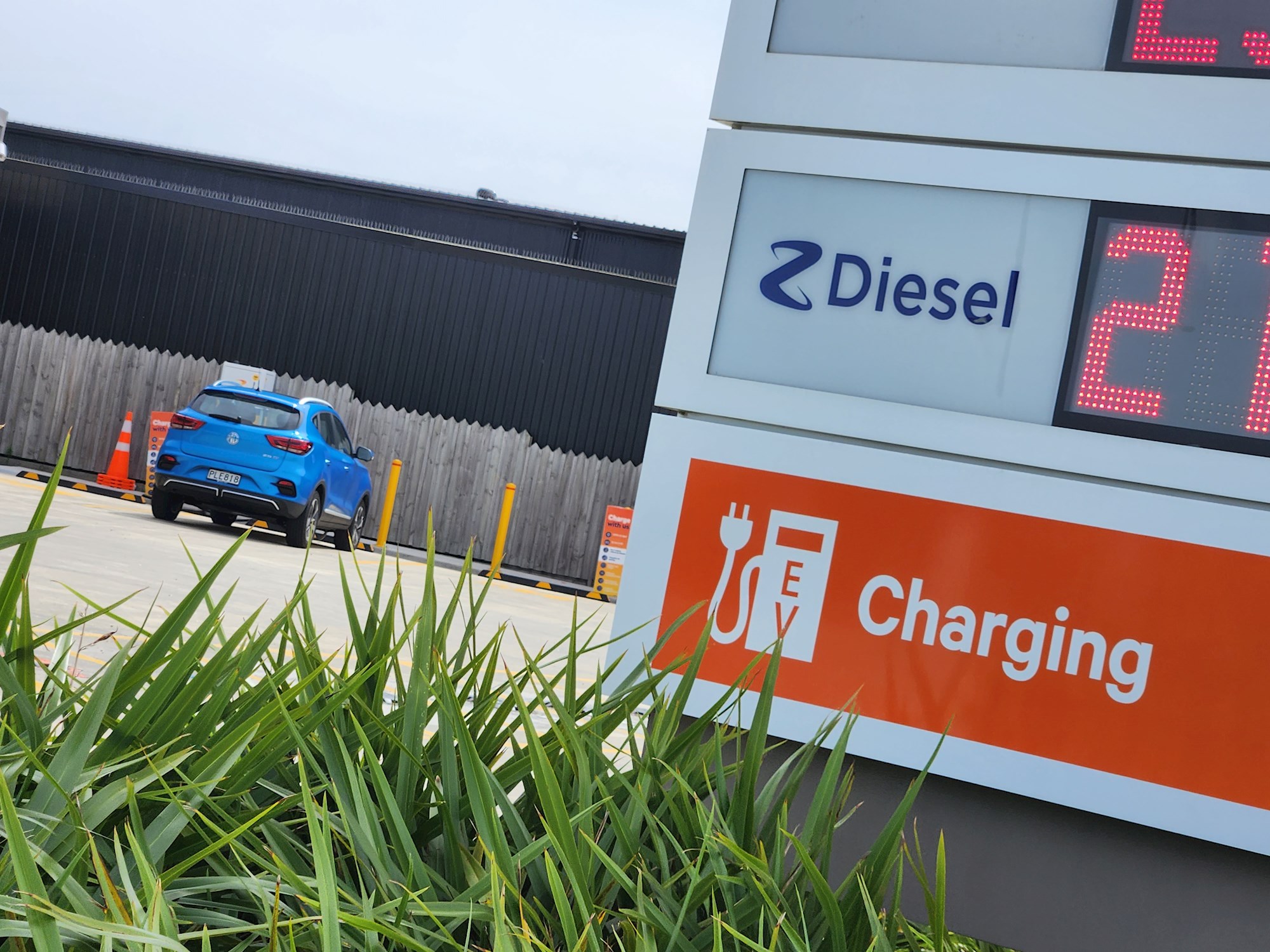
Well, there was only one way to find out: enter our Battersea Blue MG ZS EV long-termer, and the mildly scary challenge of traversing the “Golden Triangle” of the three transport/tourist hubs in the top half of the North Island — Auckland being one, Hamilton the second and Tauranga the third.
Why there? It would not only be a test of the MG’s electric range abilities on a longer trip, but also Z Energy’s burgeoning network of EV charging sites, who supplied us the energy and incentive for this trip.
With it being a roughly 430km round trip, and new Z Energy fast chargers at each triangle city, the idea was to see how easy — or not, as the case may be — it would be to have a leisurely holiday, spending several days exploring the many and varied things to see and do in and around each centre.
However, that is a normal person. Our challenge was a little different, to put a little more pressure on the EV, and do the whole triangle in just one day. How would the little MG handle that? Would we be lost in a Bermuda triangle of EV charging stations? Let’s find out.
The second-generation ZS EV has a larger battery, more efficient motor and better battery management software than the old one, so its range has risen to a claimed 320km – it's still not the long-range version (that’s coming), but in the time we’ve had it, real-world range has proven to be between 270 and 300km, depending on who’s driving it and where. So, no “non-stop” triangle trip.
Theoretically, however, that means the triangle could be done with a single charging stop, if you like living on the edge and don’t plan on any destination deviations. Being the test guinea pig, I wasn’t planning deviations, simply charging at each city for a personal break. Simple as that.
Setting out from Auckland with the MG fully charged, I headed down State Highway 1, with my first stop arriving after 45 minutes: not for electric energy, but for human energy, at Mercer, for the mother of all road trip starter meals, a mighty famous Pokeno bacon, egg and cheese toastie, eagerly wolfed down by the Waikato River.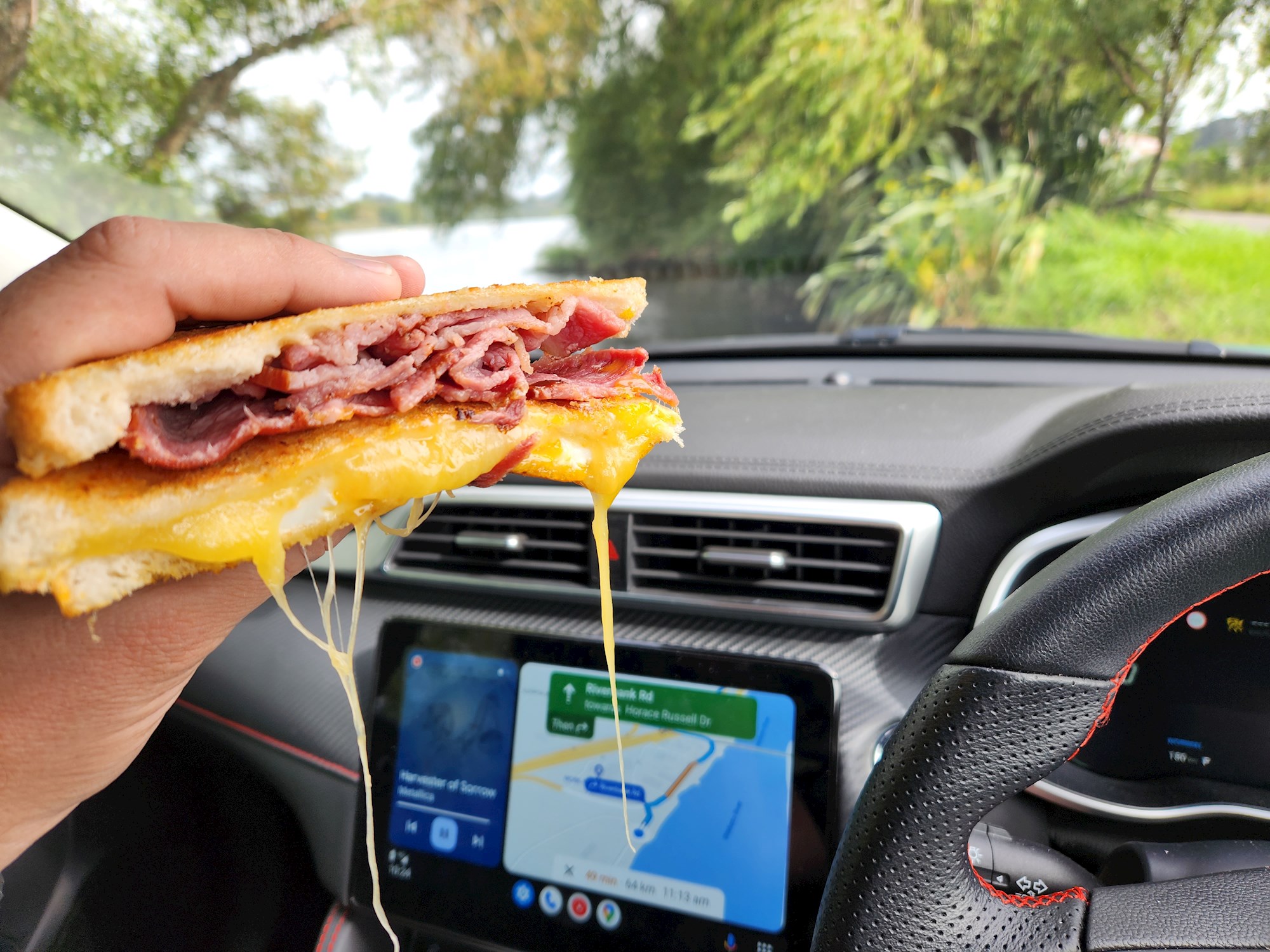
With me recharged, after 120km and 90 minutes of driving, the ZS EV needed a top-up, with the first charging stop planned at the Z station in the Hamilton suburb of Rotokauri, on the northern outskirts of the city.
Accessed by exiting on to the SH1C at the new Hamilton bypass, the road continues on the old road that continues to feed traffic into Hamilton’s north. The Z Energy station isn’t the easiest one to access from 1C, and requires either an early exit at Te Kowhai/Raglan and snake run for a few km to the Z on Wairere Drive, or simply stay on to the motorway that eventually turns into the suburban Mangaharakeke Drive and take a two-minute back-track to Wairere Drive. Either way is minimal diversion, and then offers options to explore Hamilton and its surrounds.
However, being a bit of a tourist for the day, I instead exited the motorway to pass through Huntly, to see how the Deka sign and Topp Twins mural were faring, then stayed on the Hakarimtata Rd back road, through Ngaruawahia, and even past the Hamilton Zoo — a perfect place to stop. Normally.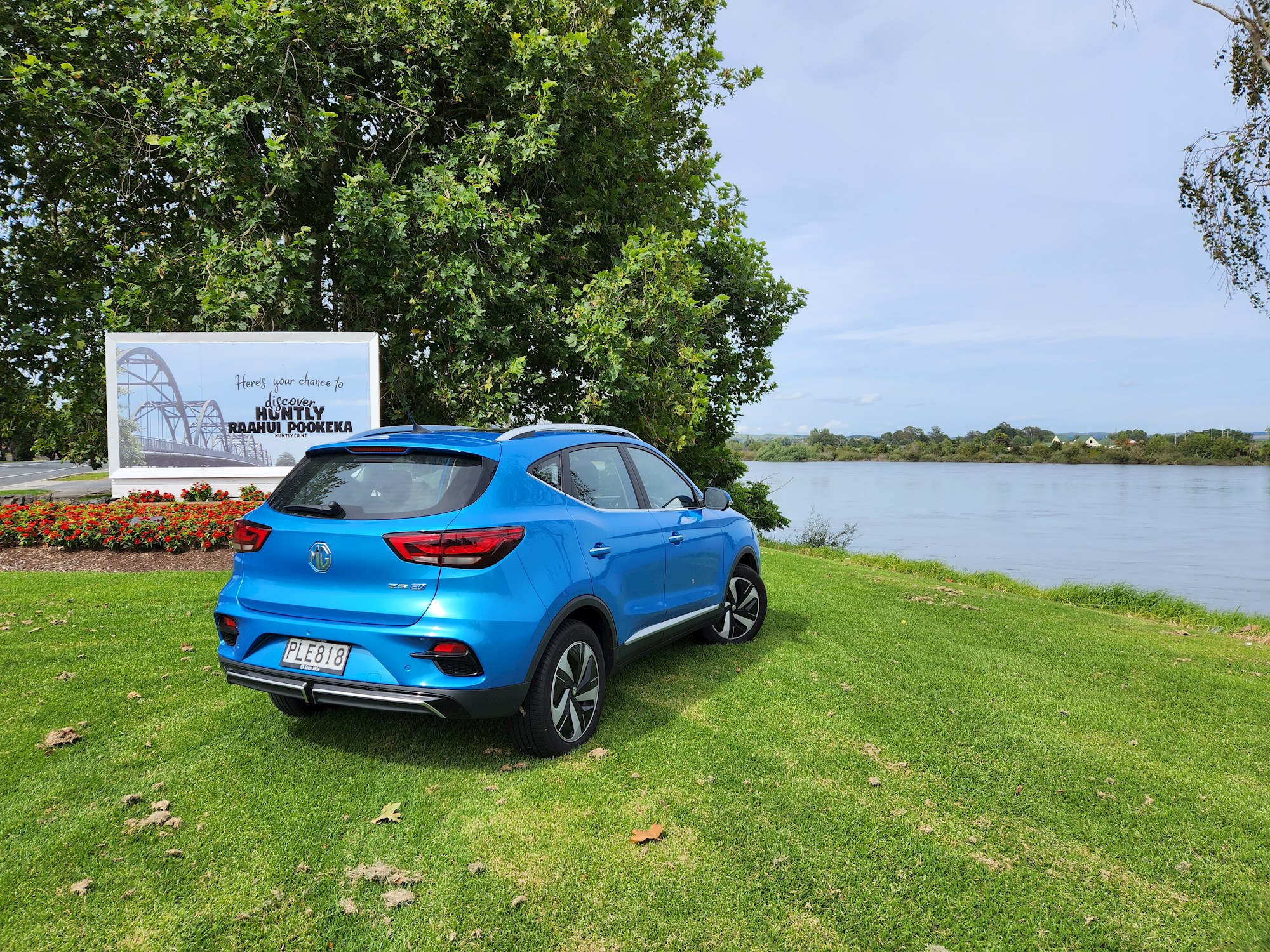
The initial pleasure of driving down a quieter road was somewhat quashed by the revelation that the old State Highway now seems to attract the type of driver so cautious (or scared) that they dare not get within 20km/h of the posted speed limits.
Arriving at the spacious, relatively new Z Rotokauri, I’m met by two separate charging stations with 180kW DC ultra-fast chargers and plenty of EV parking: two spots per charger. With the choice of CHAdeMO or CCS2 plugs, the MG nosed into the bay for its grille flap to reveal its Type2/CCS2 dual ports popped open and ready.
Without a tag to simply tap and charge, we fired up the Z EV Charging app, logged in and scanned the QR code on the charger.
Plugged in and powering up to the MG’s maximum charge rate of 85kW, the key advantage of Z stations getting in on the EV charging act is, of course, the Z facilities.
With a little time to stretch and refresh, just a few steps away is the comfort and convenience of the shop to eat or drink or have a bathroom break. I did all three, with the option of more, such as a car wash, LPG bottle swap, trailer hire, tyre pump/pressure and of course diesel and petrol pumps up to 95 octane that contribute to FlyBuys or Airpoints.
Add in a work call, and 40 minutes had flown by and the MG’s SOC (state of charge) had gone from 49 per cent back up to 97 per cent; plenty to head off for a similar 120km, 90-minute trip to Tauranga. Definitely no need to top up at Z Energy’s other Hamilton EV charger on K Drive, just near Hamilton Lake and the Waikato Hospital, another EV charging station due to open shortly.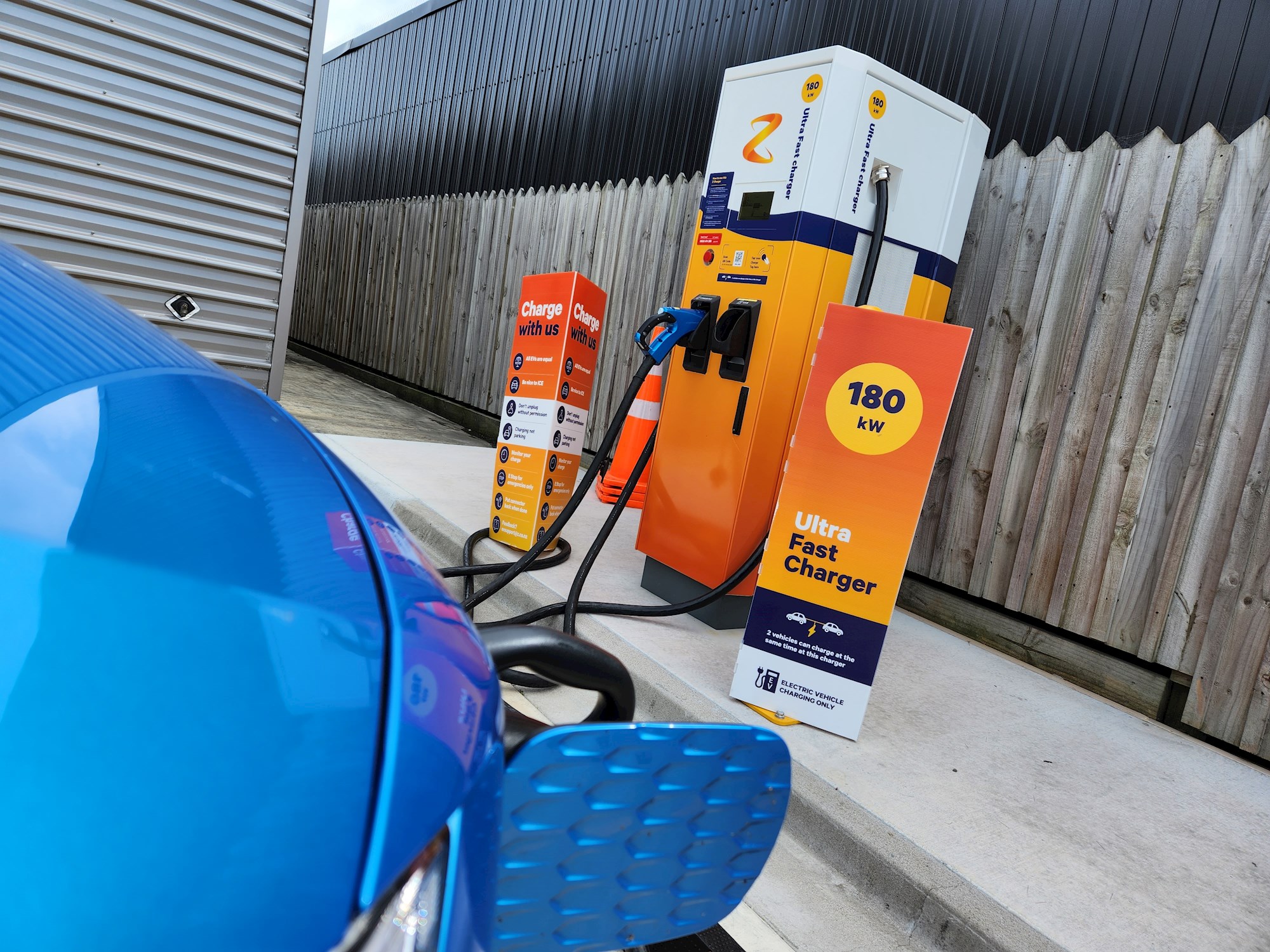
Sticking with a more direct route this time, I headed out of Hamilton on State Highway 1 past Cambridge before the turn-off just past Lake Karapiro on to SH29 towards Tauranga. Going this way direct is around 115km, but instead, I chose a different route to make a few road-trip style stops and detours, given I'm on an adventure with an EV full of charge.
Then there was the road over the Kaimai Ranges.. This is where the EV is put under more load. An EV’s range is generally best for suburban city speeds, not 80-100km/h blasts up and over a mountain range, but that should not hinder or harm a driver’s ability to enjoy driving, the little blue MG blasting along the remarkably uncrowded and wonderfully sweeping road that connects the Waikato to the Bay of Plenty.
The ZS EV is every bit a small SUV in terms of handling, meaning it is biased heavily towards comfort, and defaults to a gentle understeer when pushed. But bodyroll is well controlled in the new-generation car (better than the previous one) and it is brilliantly easy to dial out the gentle understeer with the throttle. Plus, that hefty mid range torque means it simply belts out of corners with the electric urgency with the drive mode switched from Normal to Sport.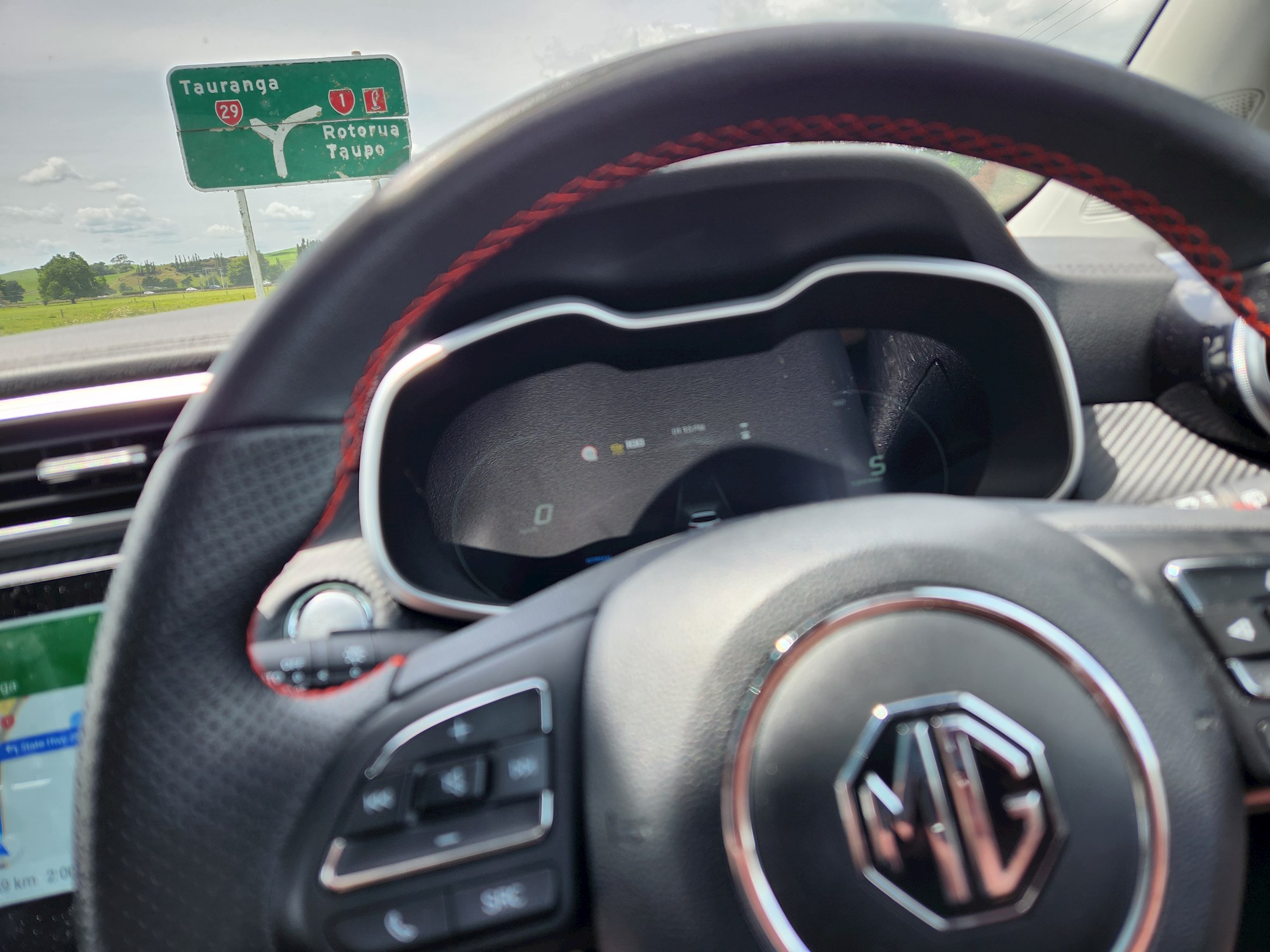
So, yeah, it is actually fun— but it did hammer my range, trimming another 50km from my total. Not a big issue, however, with plenty of range up the sleeve.
Truth be told, we did our run a few weeks early— that is, earlier than the Tauranga EV charger had opened, scheduled for late March. Still, a stop at Z during our late Feb expedition still yielded another well-deserved break for lunch, toilet and a cold drink.
With around six chargers located in Tauranga and just one over 50kW, the 180kW Z Energy ultra-fast charger will be the most powerful charger in Tauranga, offering the potential for it to be the most efficient.
After a 20-minute charge to get enough energy for the trip home, there was also chance to drive into the Tauranga CBD, to visit its waterfront, sunshine, cafe and bars and be reminded it’s a great place to stop and relax.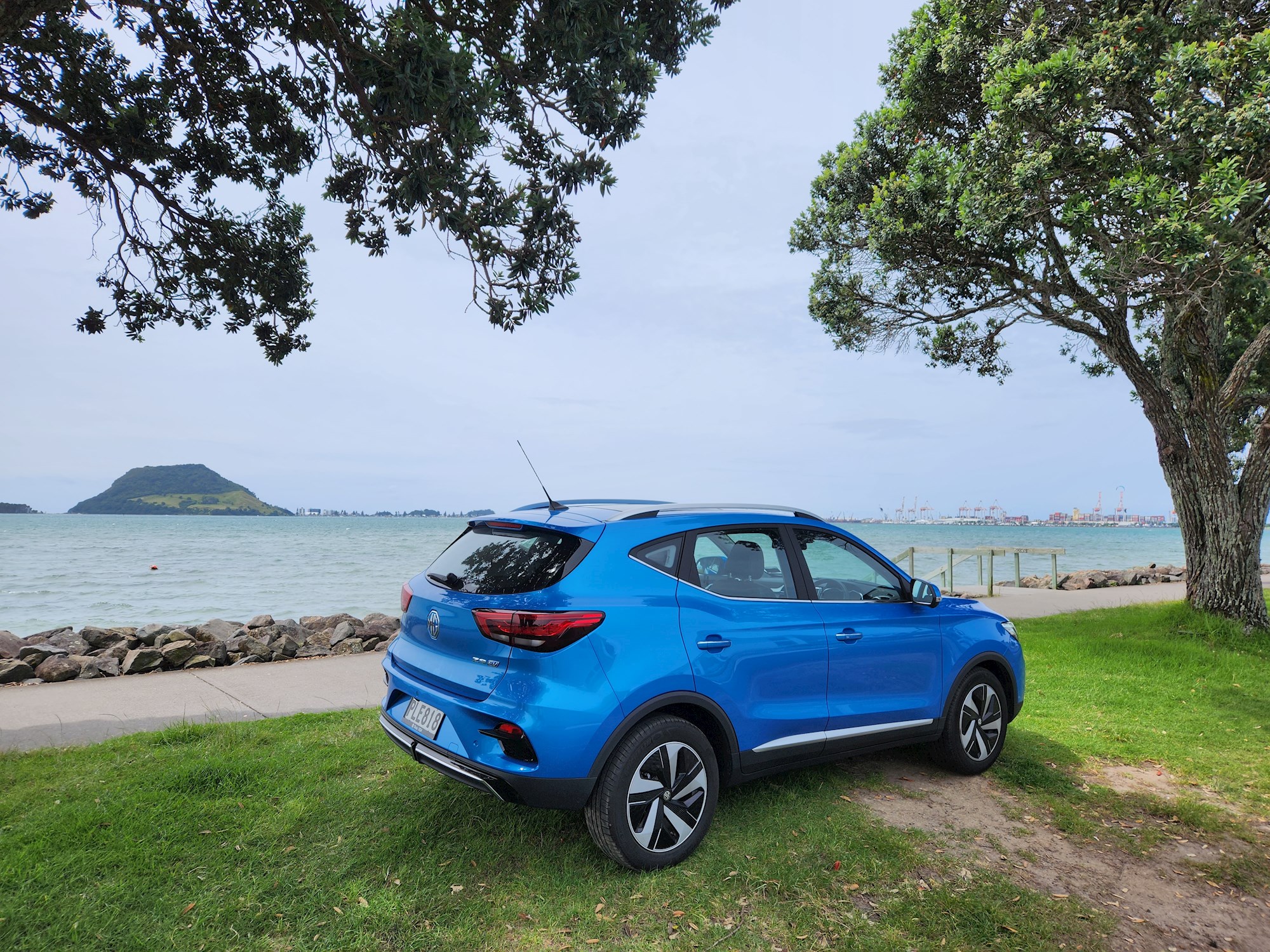
With reports of bad weather looming, however, Auckland was calling. But with both car and human fully recharged, State Highway 2 was also calling, to complete the triangle, passing through Omokoroa, Paeroa and Mangatarata, a 200km, almost three-hour return trip.
Starting around 3pm, it had been a fairly relaxed day and, having already completed several hundred kilometres in what most people would consider a small city EV, both car and body were fresh and fine.
Arriving home around 6.30pm after 450km of driving with 90km of range remaining from its 51kWh battery, the numbers proved quite reasonable for a big day trip: five and-a-half hours of driving, three hours of relaxing and refreshing, including just under two hours of charging, at a cost of around $60, at 69c per kW from Z chargers.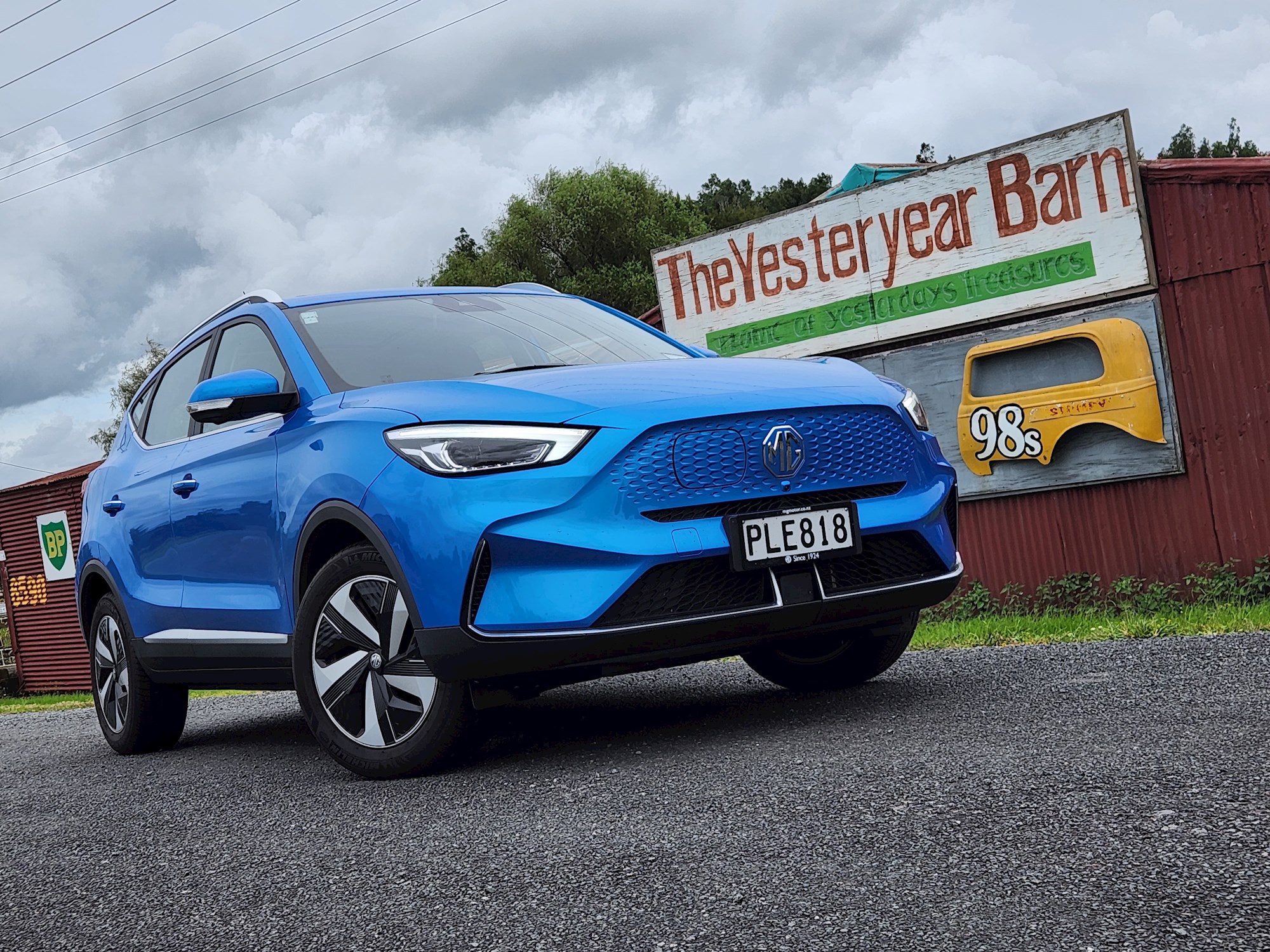
Despite the MG’s relatively small range compared to the likes of a Tesla or Polestar, there was never any range anxiety, taking advantage of graze charging when convenient, rather than when needed. And while finding an unoccupied charger is often luck, it was on our side this day, effortless and stress free, never having to wait.
The increasing frequency of ultra-fast chargers like Z’s certainly shift the playing field to be more in favour of smaller-range EVs than before, with the faster charging rates making it far quicker and easier, even though they were well in excess of the rate the MG could charge at - they simply mean the MG could zip up to its maximum charge rate up to 80 per cent full, when all batteries start to taper off charge rate.
Triangle conquered in one day, we didn’t get lost at sea and, with two charges and some touristy stops, a thoroughly enjoyable day— and even home in time for a beer.
